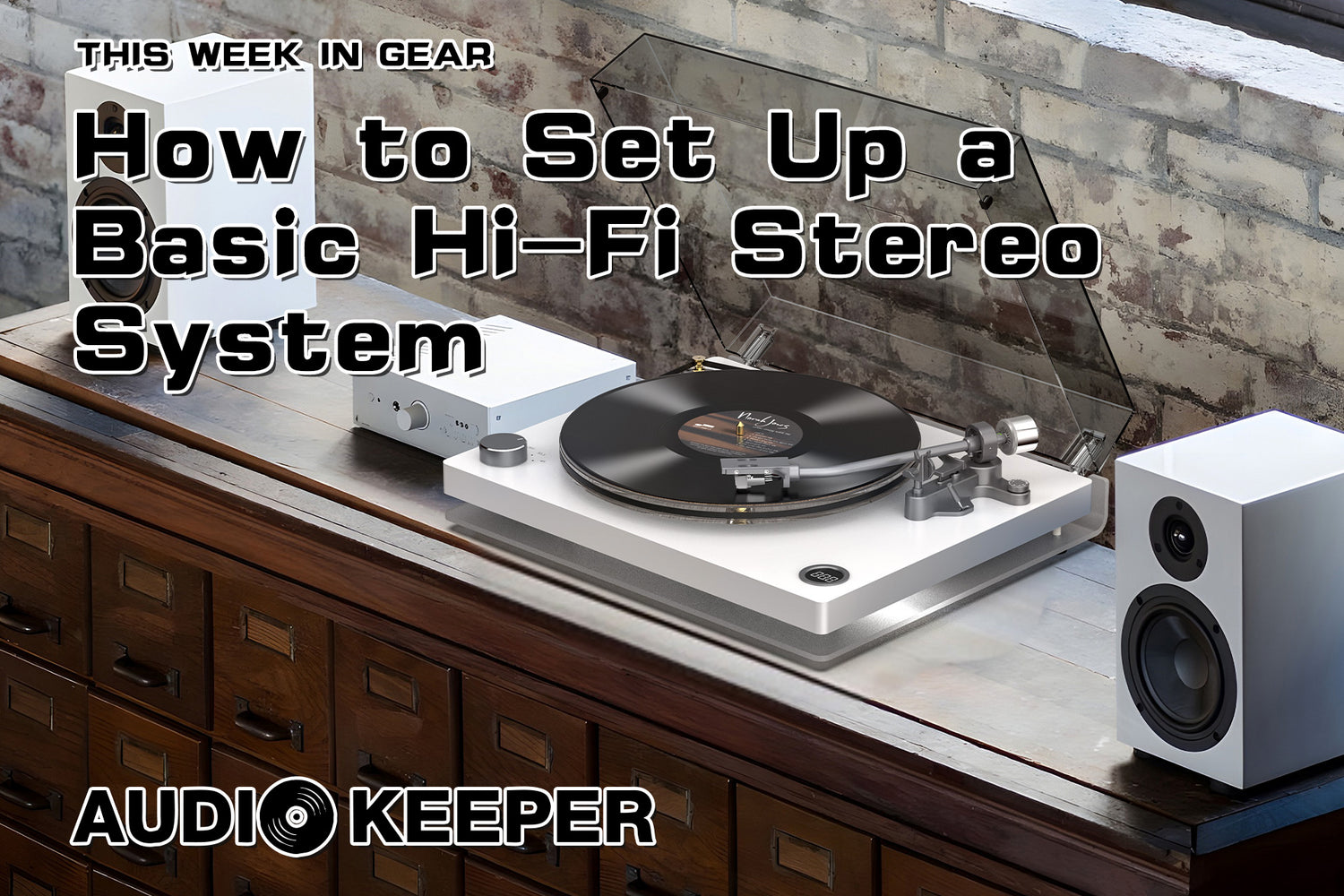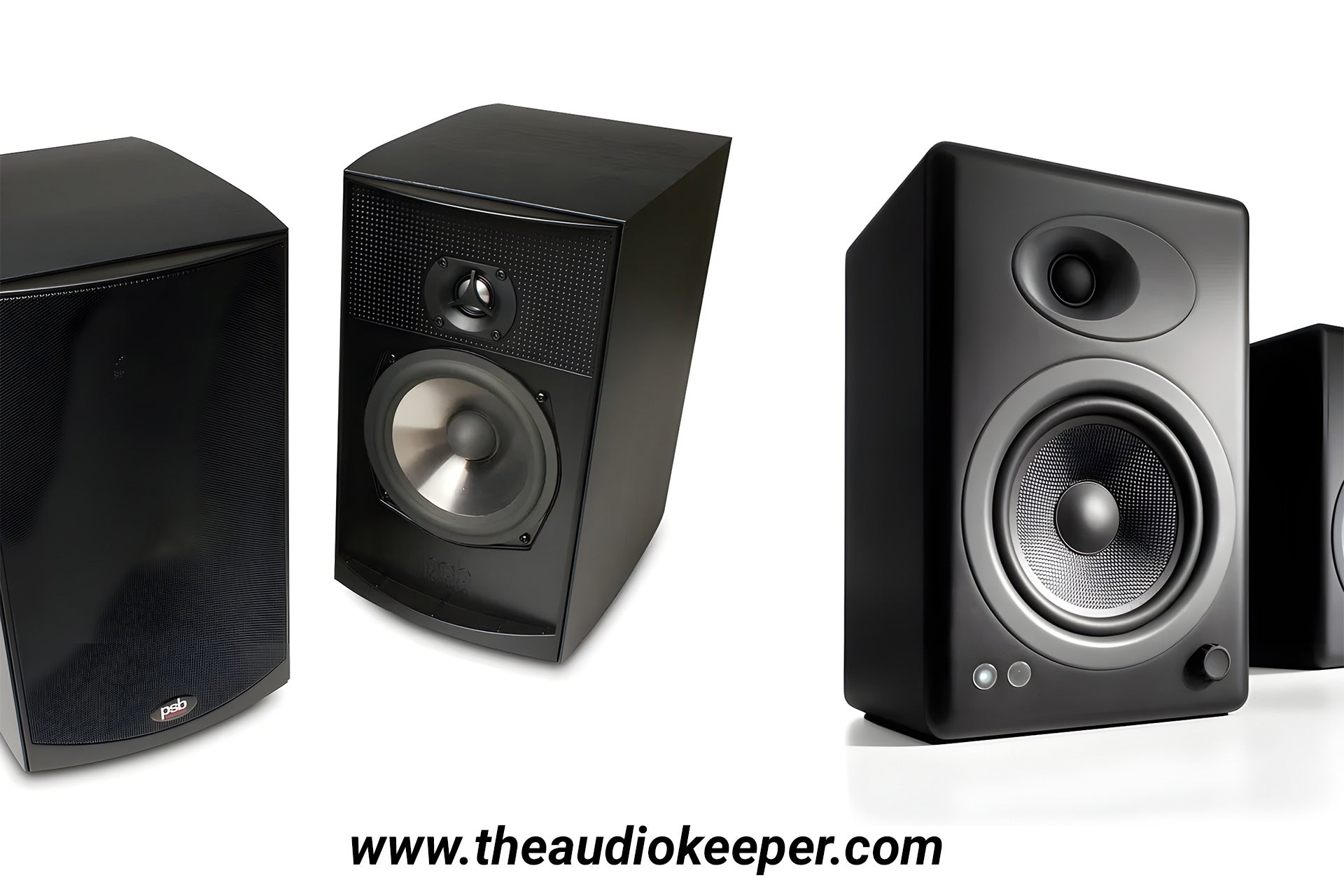Introduction
In the world of enjoying music, choosing the right audio equipment is crucial. With the resurgence of vinyl records, more and more people want to build a high-fidelity stereo system at home to experience that unique sound quality and atmosphere. In this article, we will take a deep dive into the key factors to consider when choosing a "hi-fi stereo system with turntable" to help you create an ideal music experience.
1. Understanding Your Space: Room Size and Acoustics
Before choosing a stereo system, first consider the size and acoustic characteristics of your space. Small rooms have very different needs from large rooms, and you need to make sure that the power of the system matches the size of the room. Smaller spaces are suitable for more compact speakers, while larger rooms require more powerful speakers and amplifiers. In addition, the acoustic characteristics of the room affect the sound quality, and choosing the right audio layout can optimize the sound effect.

Recommended table for matching system power with room size:
| Room size | Recommended power range (watts) | Suitable speaker type |
| 10-15㎡ | 20-50 watts | Bookshelf speakers, compact speakers |
| 15-25㎡ | 50-100 watts | Bookshelf speakers or small floor-standing speakers |
| 25-40㎡ | 100-150 watts | Medium floor-standing speakers, large speakers |
| >40㎡ | 150-300 watts | Large floor-standing speakers, professional sound systems |
Suitable audio layout solutions:
- Triangle layout: The speakers and the listening position form an equilateral triangle, and the distance between the speakers should be equal to the distance from the listening position. Suitable for most rooms.
- Wall reflection layout: Place the speakers close to the wall to enhance the low-frequency response. Suitable for small rooms, but be careful to avoid resonance.
- Bookshelf placement: Place the bookshelf speakers at ear height to ensure clear sound positioning. Suitable for small spaces and can effectively save space.
- Symmetrical layout: Place the speakers symmetrically in the room to ensure even sound distribution. Suitable for rectangular rooms.
- Corner placement: Placing speakers in the corners of the room can enhance bass, but be careful to avoid too dull sound effects.
By properly matching power and optimizing the speaker layout, you can greatly improve the sound quality and enjoy a better music experience.
2. Turntable Quality: The Heart of the System
In a "stereo system with record player", the turntable is the core component, and choosing a high-quality turntable is crucial. You should pay attention to the turntable's rotation speed stability, tone arm quality, and stylus type. A high-quality turntable will provide clearer sound quality, less distortion, and be compatible with all types of vinyl records. Compare different brands and models to make sure you choose the right product for your sound quality needs.
High-quality turntables usually have the following standards, which help consumers identify truly high-quality products when choosing:
- Speed stability: Precise speed control: High-quality turntables usually have a precise speed control system to ensure that the speed (such as 33⅓, 45 RPM) remains stable during playback to avoid speed fluctuations affecting the sound quality.
- Tone arm quality: High-quality tone arm: High-quality turntables are equipped with aluminum alloy or carbon fiber tone arms, which have good rigidity and low weight, reduce resonance and improve sound quality.
- Adjustable tone arm height: Supports adjustment of the tone arm height, which can adapt to different types of styluses and records to optimize sound performance.
- Stylus type: Premium stylus material: Such as diamond or saxophone platinum stylus, these materials can provide better sound quality and durability. Replaceable stylus: Support users to replace stylus according to different needs, improve adaptability and sound quality.
- Chassis design: Weight and material: High-quality turntables usually adopt a heavy-duty chassis design that can effectively absorb vibration. Common materials include die-cast aluminum, wood or high-density polyethylene (HDPE). Shock absorption technology: It has a built-in shock absorption system to further reduce the impact of external interference on sound quality.
- Drive mode: Belt drive or direct drive: High-quality turntables generally use belt drive, which can reduce motor noise and vibration; direct drive is suitable for DJ use and provides fast start-up and stability.
- Additional functions: Built-in preamplifier: Some high-quality turntables are equipped with built-in preamplifiers, which can be directly connected to ordinary sound systems to simplify connections. Bluetooth or USB function: Support Bluetooth or USB output for digital music or wireless playback.
- User evaluation and brand reputation: Brand reputation: Choosing a well-known brand usually guarantees product quality and after-sales service. User evaluation: Check other users' evaluations and feedback to understand the performance of the product in actual use.
Through the above criteria, consumers can more easily identify high-quality turntables and make wise purchasing decisions.
3. Amplification Matters: Choosing the Right Amp
The amplifier plays an important role in your stereo system, and choosing the right one can improve the sound quality and system performance. You need to consider power output, sound quality, and features such as Bluetooth or USB input. A high-quality amplifier can effectively drive the speakers to ensure clarity and dynamic range of the sound. It is also important to understand the compatibility of your selected amplifier with other devices.
When choosing a turntable with a built-in amplifier like Audio Keeper, whether you need to connect an additional amplifier when building a stereo system depends on several factors:
- The role of the built-in amplifier
The built-in amplifier is designed to simplify the user experience, allowing it to be directly connected to the sound system without the need for an additional amplifier. This way, users can conveniently enjoy music without worrying about complicated connections.
- The result of connecting and not connecting
When connecting an additional amplifier
Improved sound quality: High-quality external amplifiers usually provide better power output and sound quality, capable of driving high-performance speakers, improving the clarity and dynamic range of the sound.
More functions: External amplifiers may have more input options and tuning functions, improving flexibility.
When not connecting an additional amplifier
Easy to use: Directly using the built-in amplifier is suitable for beginners or users who do not want to deal with complicated connections.
Space saving: Reducing the number of devices helps save space and maintain a neat sound layout.
Moderate sound quality: Although the sound quality provided by the built-in amplifier is relatively good, it may not be as good as an external amplifier in the pursuit of high-demand sound quality.
- Usage suggestions
For beginners: If you are a beginner in audio system or want simple and convenient use, it is recommended to use a turntable with built-in amplifier, connect it directly to the audio system, and enjoy a convenient experience.
For those who pursue sound quality: If you have a higher pursuit of sound quality or already have high-quality speakers, consider connecting an external amplifier to obtain better sound quality performance.
Consider space and budget: When making a decision, you should also consider space constraints and budget to ensure that you choose the configuration that best suits your needs.
In summary, turntables with built-in amplifiers provide users with flexibility and convenience, while the choice of whether to connect an additional amplifier depends on personal usage needs and pursuit of sound quality.
4. Speaker Selection: Finding the Perfect Match
The choice of speakers directly affects how well your music is played. You should consider the type of speaker (such as bookshelf speakers or floor-standing speakers), the drive unit, and the frequency response. The ideal speaker should form a good match with your turntable and amplifier to achieve the best sound quality. In addition, the appearance design of the speaker should also match the overall system style to enhance the aesthetics of the home environment.
If you already have a turntable, choosing the right speakers is the key to improving the sound quality. Here is a detailed guide to choosing speakers based on speaker type, driver unit, and frequency response:
Speaker type
- Bookshelf speakers
Suitable space: Bookshelf speakers are usually small in size and suitable for users with limited space, such as a small living room or study.
Sound quality performance: Although small in size, high-quality bookshelf speakers can provide clear high and mid-range frequencies, suitable for playing vocals and small instruments.
Placement flexibility: It can be easily placed on a bookshelf, table or speaker stand, with high flexibility.
- Floor-standing speakers
Suitable space: Suitable for larger spaces, can provide stronger low-frequency performance, suitable for home theaters or music appreciation rooms.
Sound quality performance: Usually has multiple driver units, can provide a wider sound range and stronger sound field effect, suitable for playing rich music types.
Appearance design: Usually the appearance is more atmospheric and can be used as part of home decoration.
Driver unit
- Unit number: The number of driver units of the speaker directly affects the sound quality performance. Multi-unit speakers (such as three-band speakers) can better handle low, mid and high frequencies, providing richer sound effects.
- Unit type: Common drive units are woofers (handling low frequencies), midrange units (handling mid frequencies) and tweeters (handling high frequencies). It is important to choose a unit combination that suits your music type. For example, if you like bass-heavy music, it would be more appropriate to choose a speaker with a large-caliber woofer.
Frequency response
- Frequency range: Check the frequency response range of the speaker. Generally speaking, the wider the frequency response range, the richer the sound range that the speaker can play. The ideal frequency response range is usually between 20Hz and 20kHz, covering most of the frequencies that the human ear can hear.
- Frequency balance: Choose speakers with a flat frequency response to ensure that the sound quality is not distorted due to over-emphasis on a certain frequency band. The ideal speaker should be able to balance the low, mid and high frequencies to provide natural sound reproduction.
Matching and matching
- Compatibility with turntables and amplifiers: Make sure the selected speakers are compatible with your existing turntables and amplifiers. For example, check the impedance of the speaker (usually 4, 6 or 8 ohms) and the amplifier to avoid sound quality problems caused by power mismatch.
- Audition experience: Try to audition speakers of different brands and models before purchasing, experience their sound quality and timbre, and find the product that best suits your personal preferences.
Appearance design
- Style matching: Choose a speaker appearance that is consistent with your existing audio equipment and home environment style to ensure overall visual coordination. The material (such as wood, metal) and color of the speaker can affect your choice.
Through the above considerations, you can more effectively choose the right speaker, improve the performance of the overall audio system, and enjoy a high-quality music experience.
5. Cables and Accessories: The Unsung Heroes
When building a "hi-fi stereo system with turntable", many consumers often overlook the importance of cables and accessories. High-quality audio cables can effectively reduce signal loss and improve sound quality. In addition, the appropriate turntable stand and speaker stands can also improve acoustics and avoid resonance. Make sure to invest in these "unsung heroes" to further enhance your musical experience.
Here is a list of accessories that can improve acoustics and avoid resonances, and their main functions:
| Accessory type | Main function | Description |
| High-quality audio cables | Reduce signal loss and improve sound quality | High-quality materials and shielding design can reduce interference and ensure clear signals. |
| Turntable stands | Stabilize turntables and reduce vibrations | Provide good support to ensure that turntables are level and reduce the impact of resonance. |
| Speaker stands | Raise the height of speakers to optimize sound effects | Ensure that speakers are at ear height to improve sound field and positioning. |
| Vibration isolation pads | Reduce resonance and vibration between devices | Place at the bottom of the device to absorb vibration and improve sound quality performance. |
| Power filter | Reduce power interference and protect audio equipment | Filter noise in the power supply to ensure clean power supply. |
| Stylus cleaning tool | Maintain the stylus and maintain sound quality | Regularly cleaning the stylus can reduce sound quality degradation and extend the life of the equipment. |
| Sound insulation materials | Improve room acoustics, reduce reflections and resonance | Use on walls or floors to help optimize sound propagation. |
| Music playback software | Optimize digital audio signals and improve playback quality | Support high-resolution audio formats to improve the quality of digital music. |
Although these accessories are often overlooked, they can significantly improve the overall sound quality and listening experience when building a high-quality audio system.
6. Budget Considerations: Finding the Right Balance
Budget is a factor that cannot be ignored when building a stereo system. It is crucial to allocate your budget properly according to your needs and the expected level of sound quality. High-quality equipment often requires a higher investment, but it does not mean that you cannot find cost-effective options. Conduct sufficient market research and compare different brands and models to ensure that you find the best audio solution within your budget.
Here are some Hi-Fi stereo system and turntable setup plans for different budget ranges:
| Budget Range | Equipment Type | Equipment Recommendation | Budget Allocation (approximately) | Description |
| $100-$300 | Turntable | Basic Bookshelf Turntable | $150 | Choose an entry-level turntable with a built-in amplifier. |
| Speaker | Bookshelf Speaker | $100 | Affordable small speakers for small spaces. | |
| Cable | Basic Audio Cable | $30 | Choose a high-quality audio cable of the right length. | |
| Total | $280 | |||
| $300-$500 | Turntable | Mid-range bookshelf turntable | $250 | Choose a higher quality turntable to improve the sound quality. |
| Speaker | Mid-range bookshelf speakers or floor-standing speakers | $150 | More power and better low frequency performance. | |
| Cable | Mid-range audio cables | $50 | High quality audio cable to reduce signal loss. | |
| Total | $450 | |||
| $500-$800 | Turntable | High-quality turntables | $400 | Choose a turntable that supports multiple features and excellent sound quality. |
| Speaker | High-end floor-standing speakers | $300 | Provides richer sound quality and wider soundstage. | |
| Cable | High-end audio cables | $70 | High-quality cables ensure optimal signal transmission. | |
| Total | $770 |
By allocating the budget reasonably, consumers within all budget ranges can build a Hi-Fi stereo system that suits them and enjoy a high-quality music experience.
Conclusion
Choosing an ideal "hi-fi stereo system with turntable" is a worthwhile investment. By considering space, turntable quality, amplifier selection, speaker matching, cables and accessories, and budget, you will be able to create an ideal musical experience. Whether you are enjoying nostalgic vinyl records or listening to modern music, a high-quality stereo system will bring you unparalleled sound enjoyment. I hope this article can help you make a wise decision when choosing audio equipment and enjoy the fun of music.












Leave a comment
All comments are moderated before being published.
This site is protected by hCaptcha and the hCaptcha Privacy Policy and Terms of Service apply.